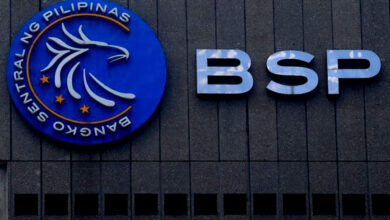The yen has fallen below a critical level, while the pound has lost ground.

Singapore: The yen broke through the key level of 145 to the dollar on Monday for the first time in more than a week, since Japan stepped in to support the currency. Meanwhile, the pound gave up some of its gains after a small recovery at the end of last week.
The lowest point for the yen was when it was worth 145.4 dollars. It was last worth 144.9 dollars, which is 0.1% less than it was before.
Monday’s drop happened after Finance Minister Shunichi Suzuki said Japan was ready to take “decisive” steps on the foreign exchange market if the yen continued to move too much.
The last time the yen fell below 145 to the dollar was on Sept. 22. This happened because the Bank of Japan kept its ultra-low interest rates, which caused the government to spend a record 2.8 trillion yen ($19.7 billion) to prop up the yen.
Sterling fell by 0.69 percent to $1.1088. This came after a big jump at the end of last week when the Bank of England said it would buy as much government debt as needed to bring order back to the market after the new Prime Minister Liz Truss’ plans to cut taxes caused financial chaos.
Truss said again on Sunday that the government was sticking with the policy. She also said that Finance Minister Kwasi Kwarteng had not told her Cabinet about the decision before it was made.
The Australian and New Zealand dollars went up in Asia before their central banks were expected to raise interest rates this week.
The Aussie went up 0.25 percent to $0.64270, while the New Zealand dollar went up 0.41 percent to $0.56265.
The Reserve Banks of Australia and New Zealand meet on Tuesday and Wednesday, respectively. The markets expect both to raise their cash rates by 50 basis points, but they will also pay attention to how the policymakers talk.
“The RBA could have a lot of power if they took a more nuanced approach and let people know that they might drop to 25 basis points at their meeting in November. That could be taken well around the world, as Pepperstone’s head of research, Chris Weston, put it this way.
The euro fell 0.1% to $0.9790 because people thought the European Central Bank would raise interest rates again this month after a red-hot inflation reading. This made people worry that the economy would fall into a recession.
Friday’s data showed that inflation in the Eurozone hit a record high of 10.0% in September, which was much higher than the 9.7% that was expected.
“The ECB will still have to work hard,” said Weston. “For me, Europe, and the UK, it’s less about interest rate dynamics and more about growth dynamics.”
“I think what we’re trying to do now is look at markets where we can price inflation or start to feel a little more sure about where inflation is going. I think the United States fits into that group.”
At the end of the week, the U.S. will report its non-farm payrolls. Also, a flood of manufacturing PMI data will be released on Monday, which will give more information about the future of the world economy.
The index of the U.S. dollar went up by 0.06% to 112.30.





